Brig. Gen. Stanley L. Scott (1893-1964) had a long and distinguished Army career and is one of the engineers whose collection of personal papers and photographs are held in the research collections of the Office of History (CEHO). Scott graduated from West Point in 1916 with a commission in the Corps of Engineers. He served in France and Germany at the end of World War I and subsequently in the Louisville, Honolulu, and Little Rock Districts. He was commander of the Southwestern Division when the U.S. entered World War II.
During the war, Scott served as Chief of Staff of the Persian Gulf Command (PGC) under Maj. Gen. Donald H. Connolly (another officer whose papers reside at CEHO). Eventually headquartered near Tehran, the PGC was responsible for the organization, training, and transporting of over 30,000 troops to Iran and the delivery of critical military supplies (including trucks, planes, and tanks) to the Soviet Union. It developed roads and port facilities, operated railroads, and established vehicle, aircraft, and barge assembly plants.
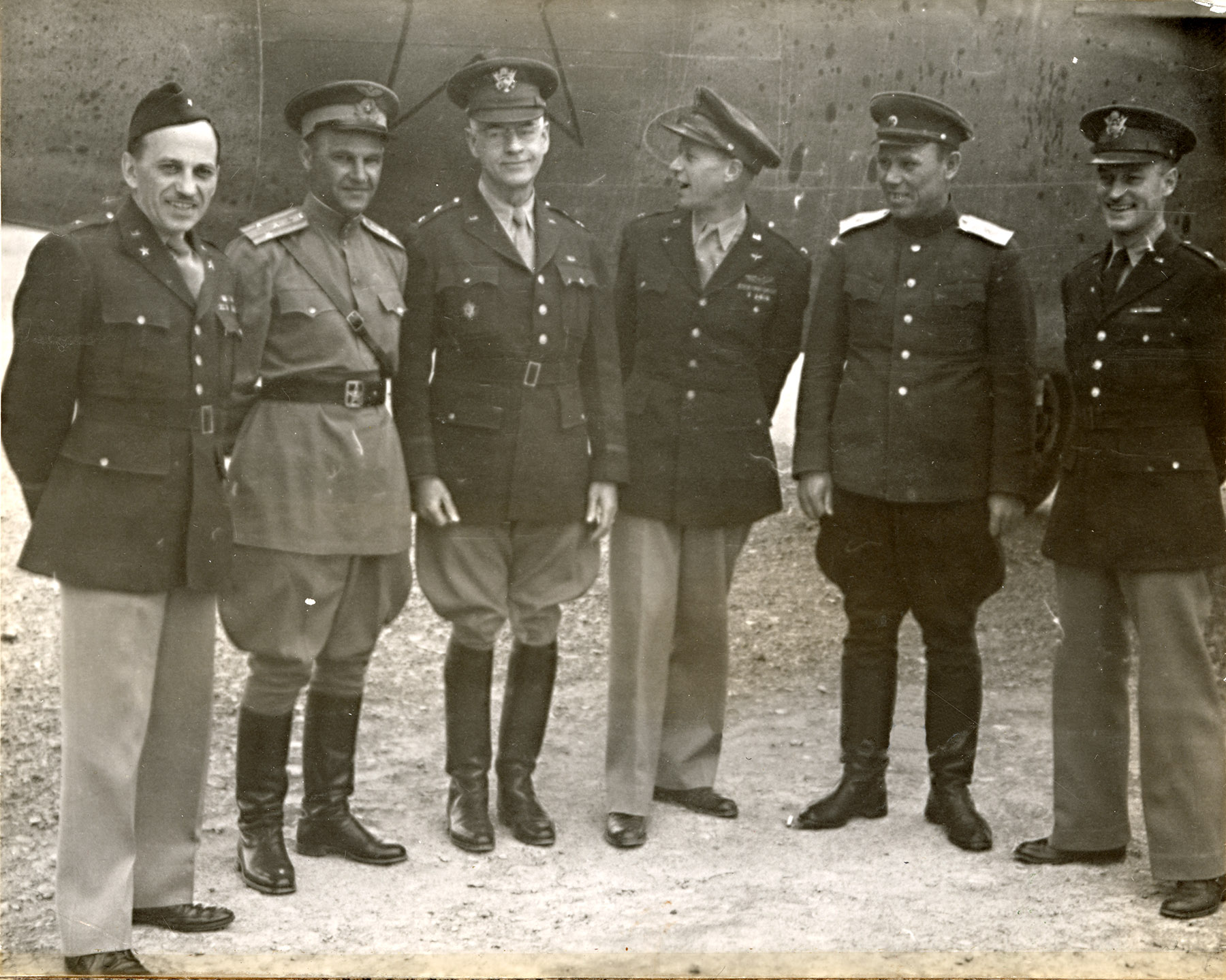 |
|
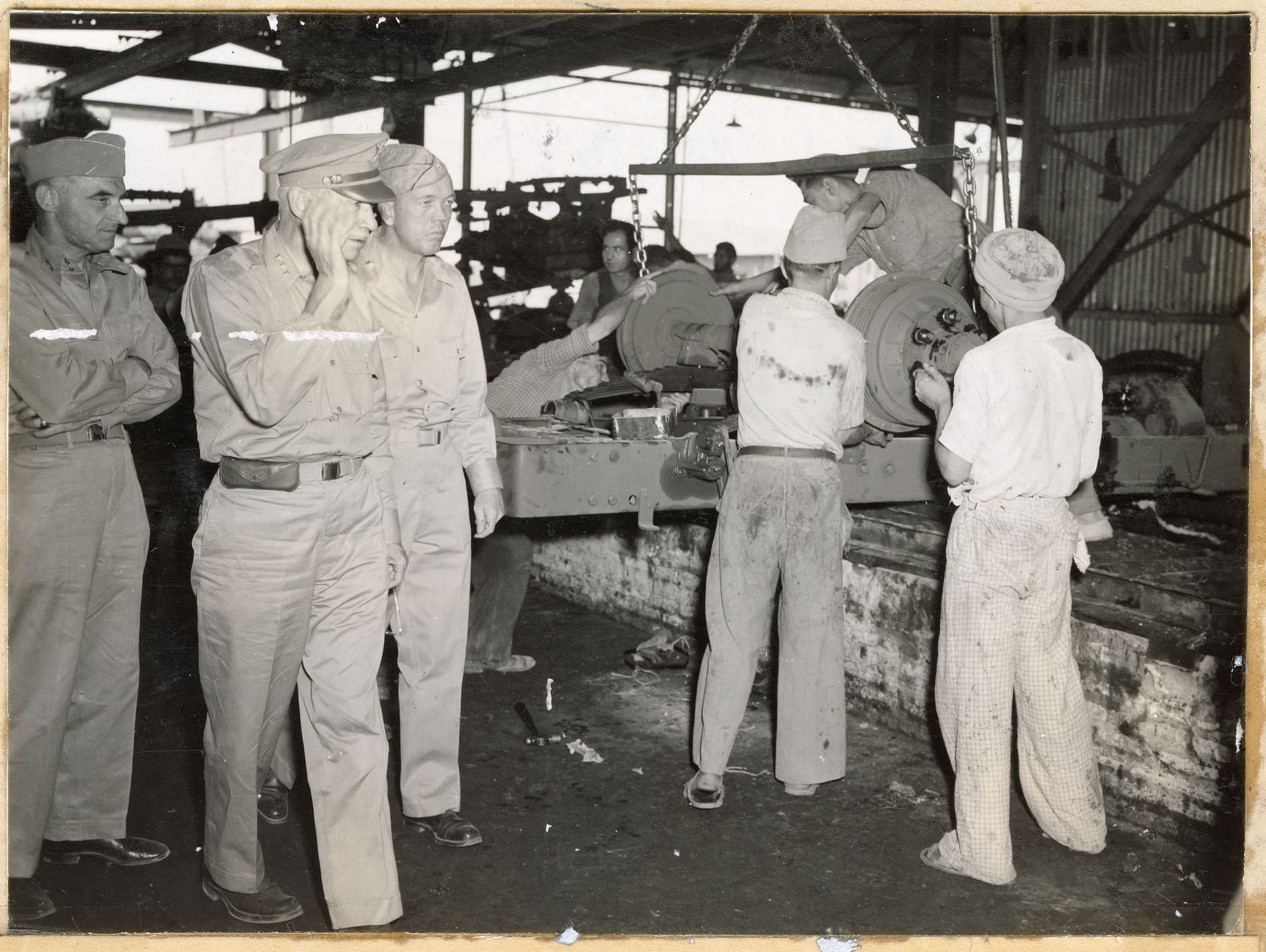 |
|
Gen. Scott, who collected most of these photos, is on the left. Next to him are: Gen. Ivan I. Obrazov, Chief, USSR Air Forces; Maj. Gen. Donald H. Connolly, Commander, Persian Gulf Command; Col. C. P. Porter; Maj. Gen. Anatoli N. Korolyov, Commanding General, USSR Forces in Iran; Brig. Gen. Donald G. Shingler, Commander of the PGC’s predecessor organization. The U.S. plane bears the Red Star symbol of the Soviet Union.
Lt. Gen. Brehon B. Somervell, Commander, Army Service Forces, inspects a truck assembly plant in Iran,
accompanied by Maj. Gen. Lucius D. Clay (left) and Lt. Col. Cecil Jordan.
|
While stationed in Iran, Scott collected mementos reflective of his time there. One of these items is an album of photographs, apparently a gift from the Iranian State Railways. The photos within depict stretches of track, a wide variety of railroad bridges (including the notable Veresk Bridge), and train stations throughout the country. A second photo album was most likely compiled by Scott himself and is of a more personal nature. Its photos generally focus on the human side of service in and near Tehran, though a few images show the vital work the Army was undertaking there.
Iran seemingly served as a frequent stopover for those traveling to Cairo, Moscow, or other important wartime locales and was a destination in its own right for many notable visitors. In November 1943 it even hosted the Tehran Conference, an important meeting among the leaders of the big three Allies. An interesting aspect of Scott’s album are the many photos of several of these high-profile visitors, including Brig. Gen. Patrick J. Hurley, a representative of President Roosevelt; Brig. Gen. Hoyt S. Vandenberg, of the Army Air Forces; Donald P. Nelson, chairman of the U.S. War Production Board; many U.S. and Soviet Army officers; and several others. The entire contents of these two albums, almost 250 photos, are available on the USACE Digital Library, where researchers can browse, search, and download the public domain photographs. Some highlights are displayed below.
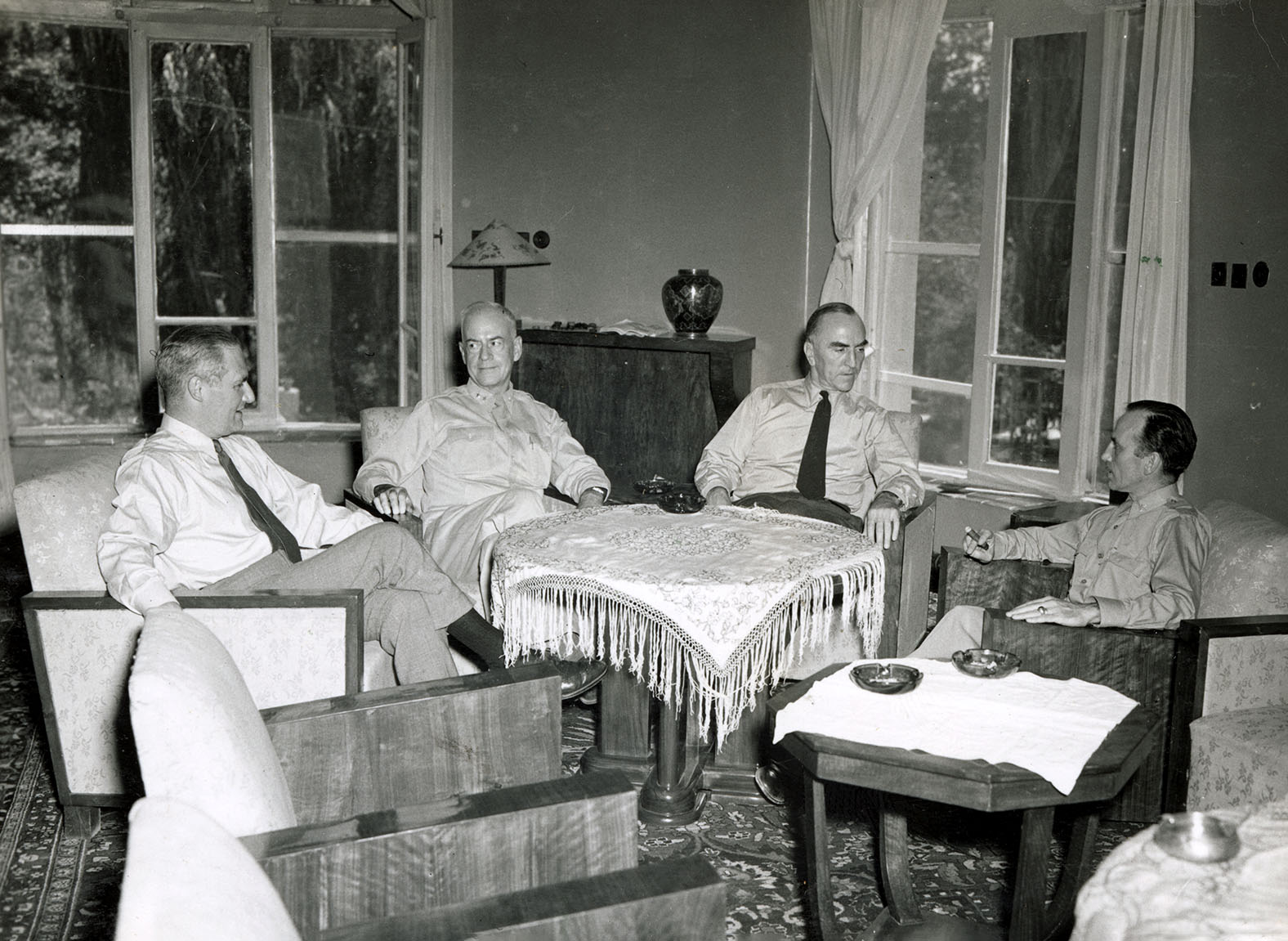 |
|
 |
|
Arthur Hays Sulzberger, president of the New York Times; Gen. Connolly; Capt. Eddie Rickenbacker, the World War I fighter ace; and Gen. Scott. Rickenbacker met and gave an address to some of the Army personnel stationed around the country.
|
|
Archbishop Francis Spellman, Military Vicar of the U.S. Armed Forces, visited Iran and said Mass for personnel of the PGC.
|
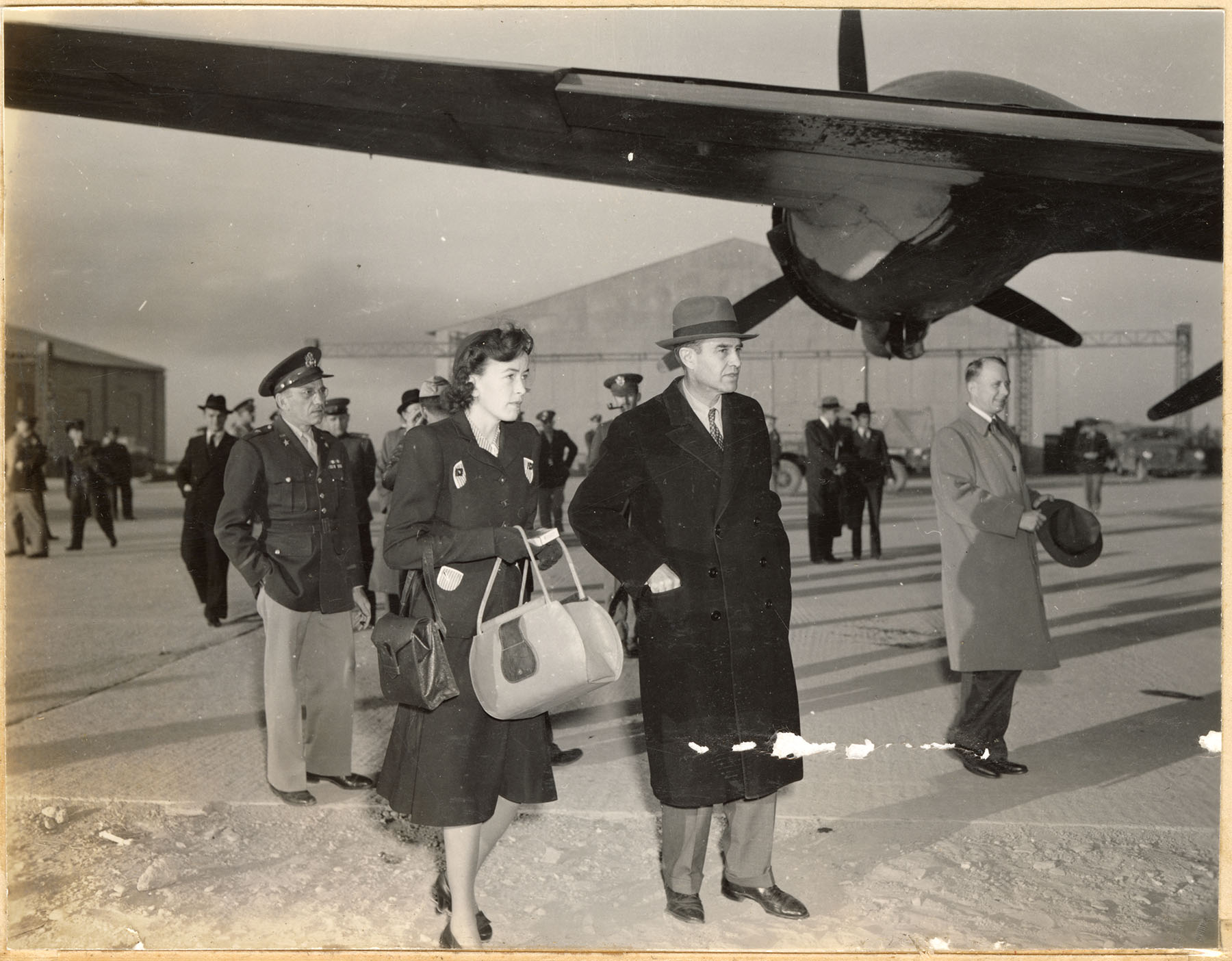 |
|
 |
|
W. Averell Harriman, U.S. ambassador to the USSR, accompanied by his daughter Kathleen, stopped in Tehran on his way to assume duties in Moscow.
|
|
U.S. Secretary of State Cordell Hull (wearing hat) visited Iran. On his right is Louis G. Dreyfus Jr., American Minister to Iran, and on his left is Mohamed Said, Iranian Minister of Foreign Affairs.
|
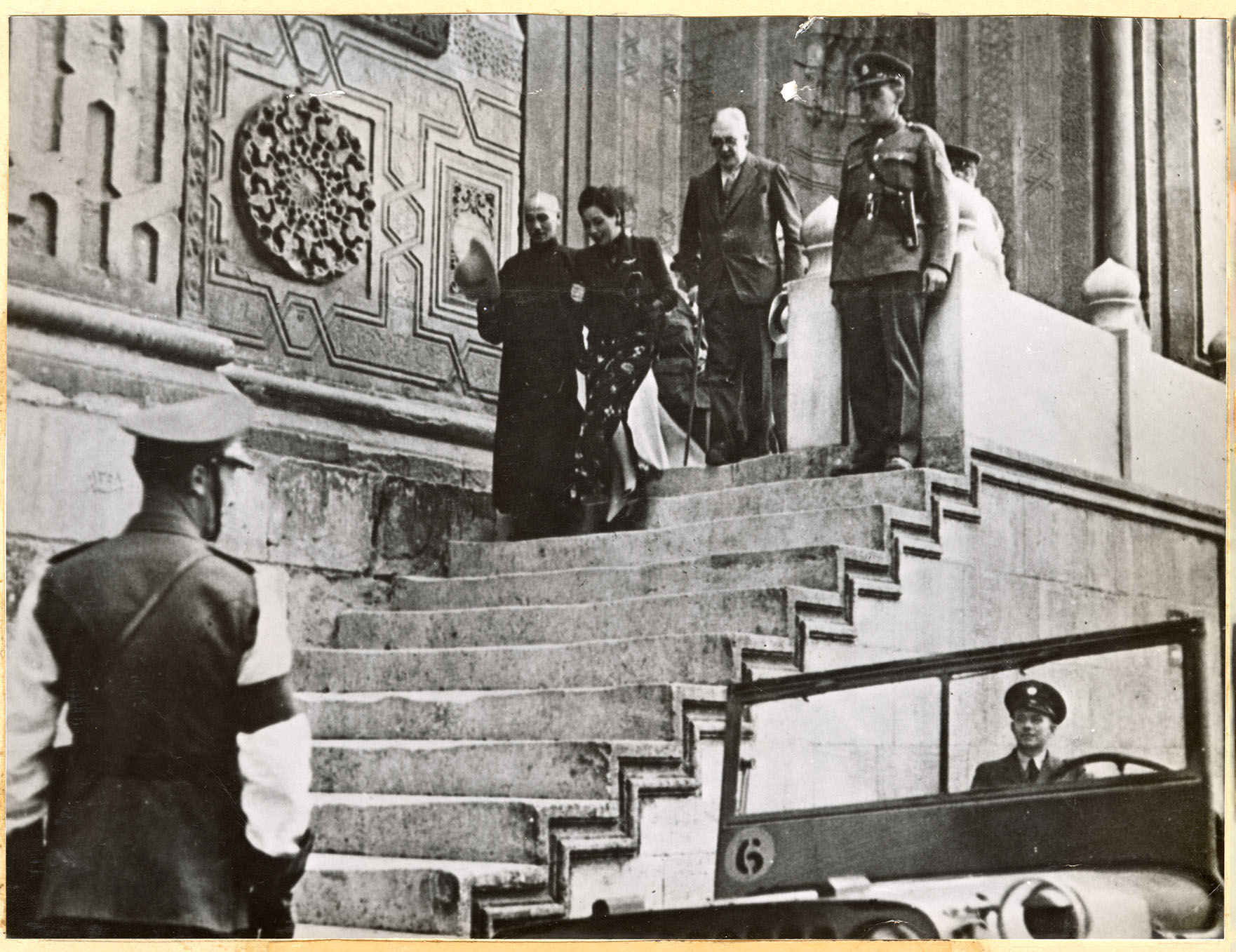 |
|
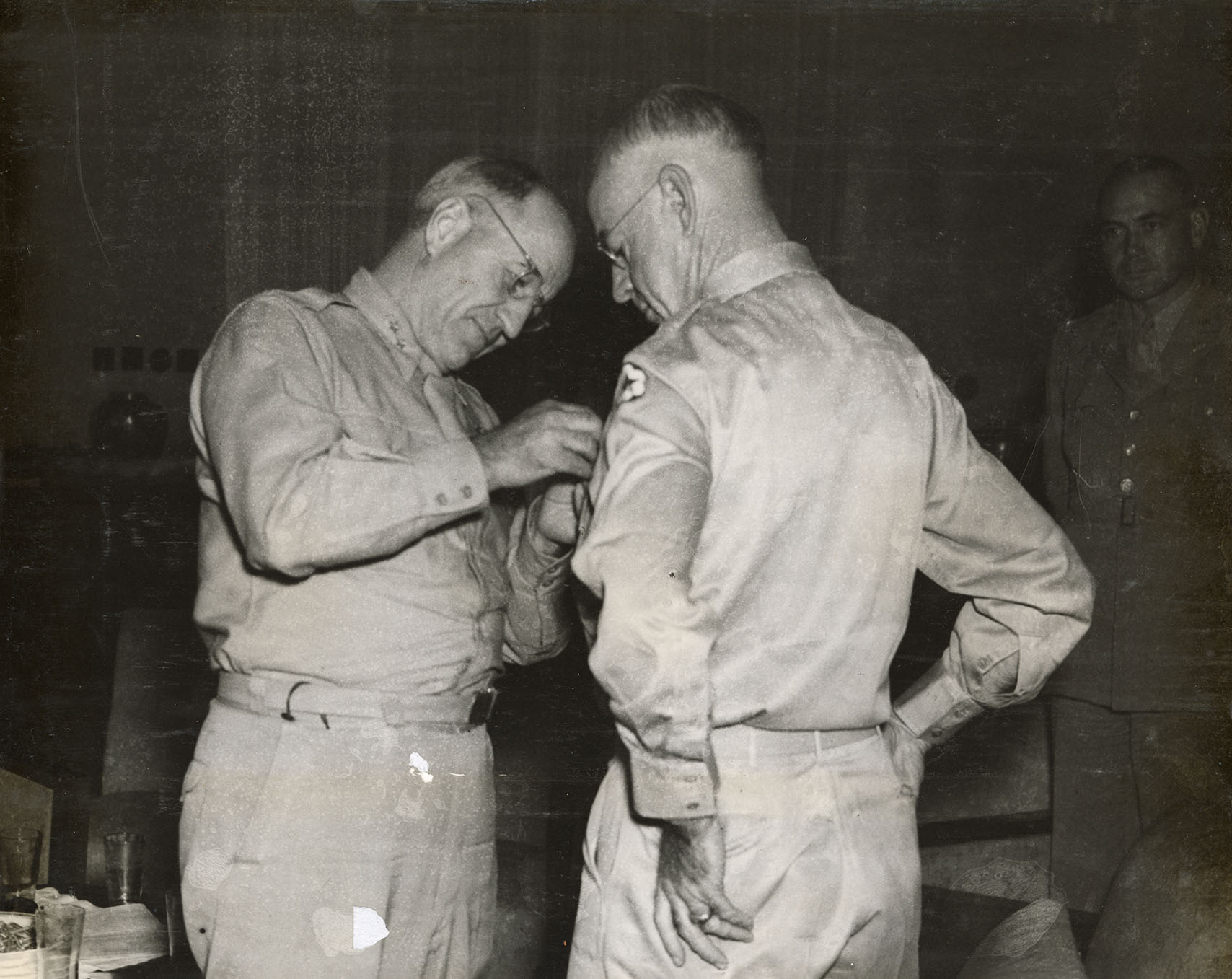 |
|
Chiang Kai-Shek and Madame Chiang (Soong Mei-ling) in Cairo, 1943.
|
|
During his stay in Iran, Maj. Gen. Ralph Royce, Commander, U.S. Army Forces in the Middle East, pins the Legion of Merit on Gen. Connolly.
|
 |
 |
|
Jack Benny, American entertainer, and his troupe spent time in Iran to entertain the members of the PGC. He was joined by English-American actress Anna Lee, singer/dancer/actress Wini Shaw, and harmonica player Larry Adler.
|
The Soviet Union also sent entertainers to the Persian Gulf area. In fall 1943, a troupe arrived, which included pianist Nina Emelyanova, soprano Oksana Kolodub, ballerina Sulamith Messerer, violinist Galina Barinova, and lyric soprano Antonina Vyspreva.
|
| |
 |
|
|
The Soviet troupe and officers in 1943. Standing left to right: actor Georgi Farmanyants, unidentified Soviet officer (possibly Nikolay Mironov), unidentified, accordionist Anatoly Shalaev, Messerer, Kolodub, Emelyanova, declaimer Anton Schwarz, Barinova, three unidentified men. Kneeling are an unidentified man, Vyspreva, and bass soloist Alexei Korolyov. Juggler Vitali Spevak may be one of the unidentified.
[Thanks to Dejan and Ksenija Ristic, Vanya Eftimova Bellinger, and Allan Mustard for Russian translation assistance.]
|
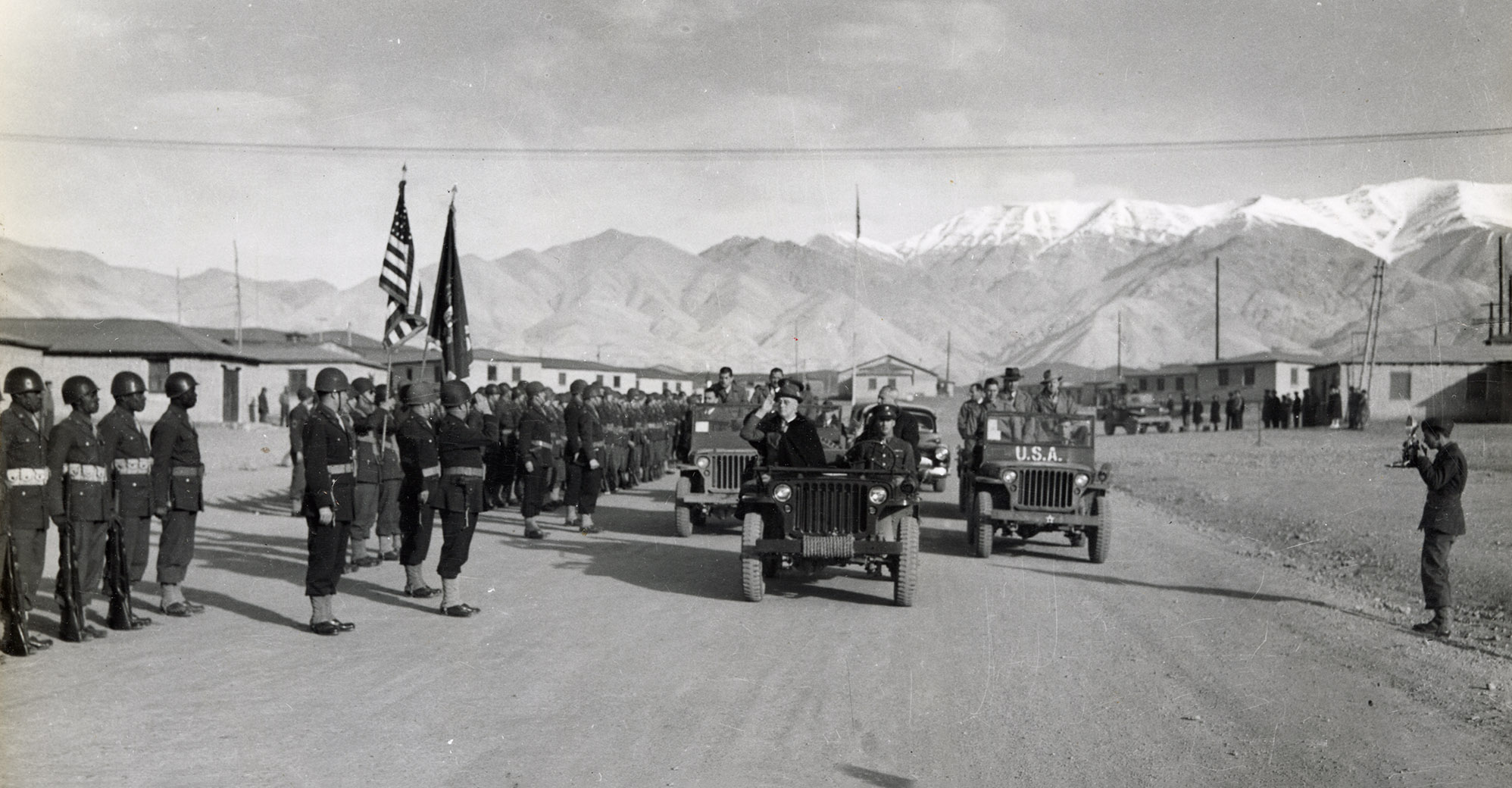 |
|
Following the Tehran Conference, American President Franklin D. Roosevelt visited troops and others at Amirabad in Iran.
|
See the entire collection of original (uncropped) photographs
Office of History, Jun. 2021